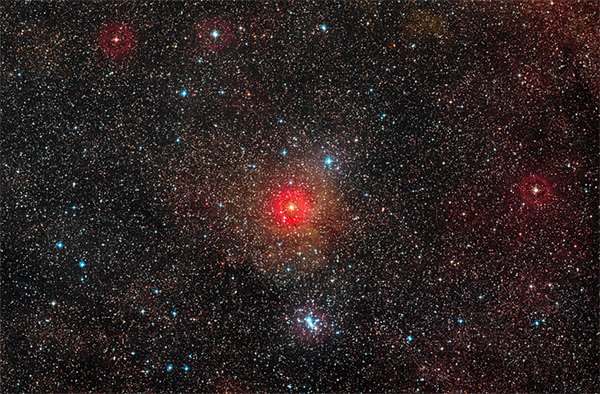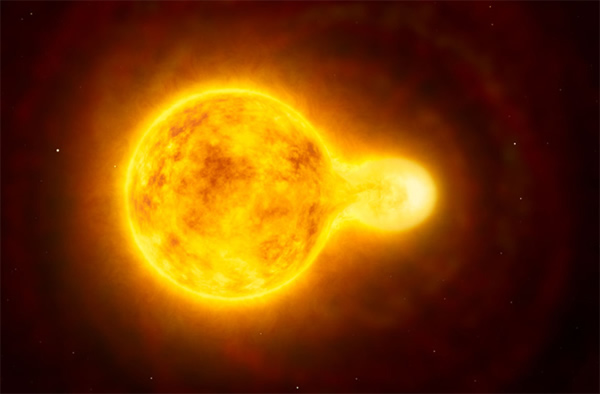Monster Rare Yellow Hypergiant Star Discovered
HR 5171, the brightest star in the center of this wide-field image, is a yellow hypergiant, a very rare type of stars with only a dozen known in our galaxy.
A gargantuan star, measuring 1,300 times the size of our sun, has been uncovered 12,000 light-years from Earth — it is one of the ten biggest stars known to exist in our galaxy. The yellow hypergiant even dwarfs the famous stellar heavyweight Betelgeuse by 50 percent. While its hulking mass may be impressive, astronomers have also realized that HR 5171 is a double star with a smaller stellar sibling physically touching the surface of the larger star as they orbit one another.
“The new observations also showed that this star has a very close binary partner, which was a real surprise,” said Olivier Chesneau, of the Observatoire de la Côte d’Azur in Nice, France. “The two stars are so close that they touch and the whole system resembles a gigantic peanut.”
This recent observation was made by Chesneau’s team using data from the ESO’s Very Large Telescope Interferometer (VLTI) in Chile. They have built on sixty years of observational data to realize that the primary star in the binary system, HR 5171A, is going through very rapid changes, indicating that it has entered a very short phase in its life cycle.
Artist’s impression of the co-joining binary yellow hypergiant star HR 5171.
Yellow hypergiants are rare stellar objects, only a dozen have been identified in the Milky Way, so all are considered cosmic jewels. The yellow hypergiant is actually a short phase that some of the most massive stars (depending on their mass) go through before burning all their fuel reserves. During this phase, violent internal convulsions blast huge quantities of stellar gases into space, creating a vast nebula around the star.
Although it’s located moderately far from Earth, HR 5171 can just about be seen on a clear night in the constellation of Centaurus with the naked eye and has been measured to have a magnitude of between 6.10 and 7.30.
Over the last 40 years HR 5171A has been growing bigger, becoming cooler as it expands. Its adjoined stellar partner HR 5171 B is slightly hotter and has been observed to pass in front of HR 5171 A as they carry out their intimate orbital waltz (it is for this reason HR 5171 is known as an “eclipsing binary” system), a relationship that inevitably affects the dynamics of the system’s lifecycle.
“The companion we have found is very significant as it can have an influence on the fate of HR 5171 A, for example, stripping off its outer layers and modifying its evolution,” said Chesneau.(Mar 12, 2014 01:23 PM ET // by Ian O'Neill)













